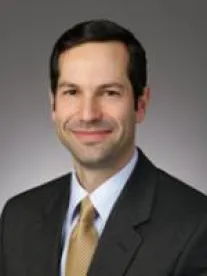On April 1, we looked at the opaque definitions of riparian area and floodplain in EPA and the Corps’ proposed rule redefining “Waters of the U.S.” Unfortunately, part of the definition of another term – tributary – also raises more questions than it answers.
We looked at part of the definition of tributary last Thursday, when examining the reach of the agencies’ jurisdiction upstream from traditionally navigable and interstate waters. At the time, we discussed the portion of the definition that identifies a tributary as any feature with a bed and bank that contributes flow to any downstream jurisdictional water. But that’s only part of the definition. It continues:
In addition, wetlands, lakes, and ponds are tributaries (even if they lack a bed and banks or ordinary high water mark) if they contribute flow, either directly or through another water to a [jurisdictional] water. . .
(Our emphasis). So these bodies can be jurisdictional even without a bed and bank.
Neither the rule nor the preamble define lake or pond. But the preamble notes that “[t]he flow in the tributary may be ephemeral, intermittent or perennial.” (An ephemeral stream is one which flows briefly in direct response to precipitation in the immediate vicinity). Since lakes and ponds are tributaries, it appears that under the rule lakes and ponds might be jurisdictional even if they only contain water when there is nearby rain or snow melt.
The implications of this part of the definition of tributary are unclear:
-
All water flows downhill. The preamble states that “[n]on-jurisdictional geographic features (e.g., non-wetland swales, ephemeral upland ditches) may still serve as a confined surface hydrologic connection between an adjacent wetland or water and a traditional navigable water, interstate water or the territorial sea.”
-
Many uphill areas are connected to downstream waters by surface water. Are all of these upstream areas lakes or ponds?
-
There is no clarity as to whether groundwater connectivity is sufficient to be the type of “direct contribution of flow” needed under the rule for a pond or lake to be a tributary. The preamble suggests that it may be, so long as the flow isn’t “lost to deep groundwater.”
-
Identifying groundwater connectivity would definitely require technical consultants – it cannot be seen by laypersons.
In short, it is unclear how lakes and ponds will be identified if they need not have a bed or bank, may not have to be wet much of the year, and can be connected to downstream waters by swales or other featureless forms (or possibly even underground flow).
And so we’re back to the puddles we referred to in our first post, “one commonly understood meaning” of which, the agencies say, “is a relatively small, temporary pool of water that forms on pavement or uplands immediately after a rainstorm, snow melt, or similar event.” In other words, the agencies describe these puddles as ephemeral bodies that could, conceivably, be viewed as tributaries under the part of the definition we just parsed.
But, as we discussed last Wednesday, the agencies have disclaimed jurisdiction over these puddles.
The reason, it appears, is that the agencies have identified different types of ephemeral ponds/puddles, depending on their downstream flow. In referring to a puddle over which they disclaim jurisdiction, the agencies state that it “cannot reasonably be considered a water body or aquatic feature at all, because usually it exists for only a brief period of time before the water in the puddle evaporates or sinks into the ground.” (Our emphasis)
It therefore seems that other ephemeral ponds/puddles – if they contain water that flows downhill into another waterbody – may indeed be jurisdictional.
Even if they aren’t, this part of definition of tributary adds another level of opacity to the rule.

For part one, click here.
For part two, click here.
For part three, click here.
For part four, click here.
For part five, click here.



 />i
/>i

